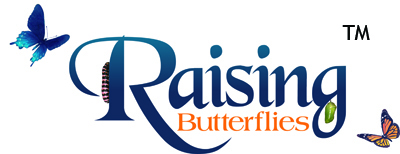Danaus plexippus

Beginner Rearing Instructions: Click here
Habitat: Agricultural Areas; Valley Wet Meadows; Mountain Canyons;
Host Plants: Asclepias speciosa, Asclepias subulata, Asclepias incarnata
Suitable Lab Host Plants: Any milkweed.
Caring for Live Female Butterflies: Feed females regularly.
Methods of Female Oviposition: Open Screen Cages
How to Find Eggs: In the Intermountain West, females frequent shade trees to avoid the heat of our summer days; especially Russian Olive Trees in moist agricultural areas. Females lay eggs on showy milkweed taking refuge in the understory of these roosting trees. Two other strategies to find eggs is to look underneath leaves along agricultural canals next to roadways and on isolated patches of showy milkweed growing in riparian canyons.
Females will sometimes prefer laying eggs on shorter showy milkweed plants over taller ones. (But, not always.) Click here to watch video on how to find Monarch caterpillars feeding on showy milkweed taking refuge under Russian Olive trees in Northern Utah. Monarchs from the California coast oviposit on milkweeds near Eucalyptus trees. Monarchs from the midwest oviposit near agricultural areas.
How to Hatch Eggs: Separate eggs individually (Young monarch caterpillars are cannibalistic against other eggs it might encounter)
How to Find Caterpillars in the Field: Look on milkweeds; especially on those plants taking refuge in the understory of Russian Olive Trees. Young monarch caterpillars burrow out a hole in the ventral side of the host plant leaf. Go to Caterpillar Strip Patterns and scroll down the photos to the monarch caterpillar photos.
Caterpillar setups: Open terrariums; Open Bucket; Collapsible Cages (if using potted plants.)
Overwintering Stage: Adult. Adults migrate south for the winter.
Overwintering Strategies: Visit Monarch Overwintering sites for a wonderful experience.
Larva to Pupa: Caterpillar silks to leaf or twig; creates and attaches cremaster; hanging as a J before pupating.
Emergence: Emergence Container
Number of Broods per Year: 1-2 depending upon location.
Avoiding Diapause Techniques:
Disease Prevention: Change out host plant and remove frass every three to four days. See http://www.monarchwatch.org/biology/pred3.htm for more information.
Field Notes:

